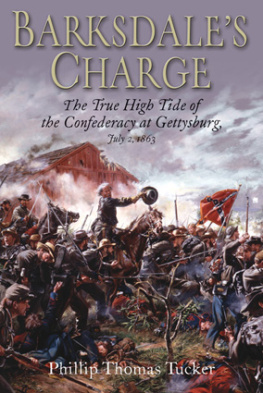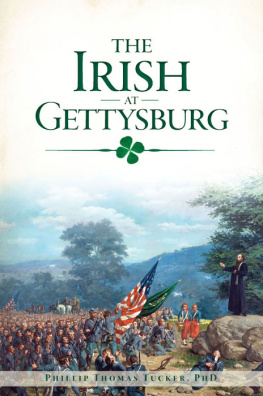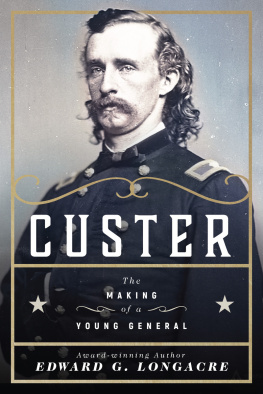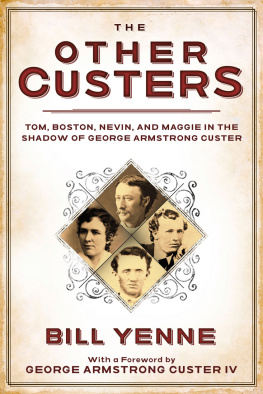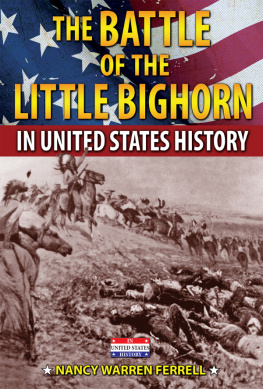Praise for
Death at the Little Bighorn
Custers last movements and decisions have been argued about since 1876, but, in my mind, no one has made a stronger case for what really happened than Phillip Thomas Tucker in this compelling and convincing narration.
Bob Boze Bell, executive editor True West magazine
Philip Thomas Tucker presents a fascinating, lively, and important reassessment of the famous Battle of the Little Bighorn that recognizes the role of Cheyenne as well as Lakota warriors in the decisive turning point that defeated Lieutenant Colonel George Armstrong Custers flank attack, and explains vividly the military tactics that resulted in defeat instead of victory for Custer and his command. Where the Last Stand happened and what it means will change dramatically for readers of this book.
Clyde A. Milner II, co-editor of The Oxford History of the American West and co-author of As Big as the West: The Pioneer Life of Granville Stuart
Copyright 2016 by Phillip Thomas Tucker
All rights reserved. No part of this book may be reproduced in any manner without the express written consent of the publisher, except in the case of brief excerpts in critical reviews or articles. All inquiries should be addressed to Skyhorse Publishing, 307 West 36th Street, 11th Floor, New York, NY 10018.
Skyhorse Publishing books may be purchased in bulk at special discounts for sales promotion, corporate gifts, fundraising, or educational purposes. Special editions can also be created to specifications. For details, contact the Special Sales Department, Skyhorse Publishing, 307 West 36th Street, 11th Floor, New York, NY 10018 or .
Skyhorse and Skyhorse Publishing are registered trademarks of Skyhorse Publishing, Inc., a Delaware corporation.
Visit our website at www.skyhorsepublishing.com.
10 9 8 7 6 5 4 3 2 1
Library of Congress CataloginginPublication Data is available on file.
Cover design by Rain Saukas
Cover art courtesy of Mark Churms, detail from His Brothers KeeperGeorge & Tom Custer 1876 Mark Churms 2003.
Print ISBN: 9781634508001
Ebook ISBN: 978-1-63450-806-3
Printed in the United States of America
Dedication
To the small band of Cheyenne and Sioux warriors who bravely defended Medicine Tail Coulee Ford on the afternoon of June 25, 1876. These relatively few men and boys were the forgotten ones who repulsed George Armstrong Custers last charge.
Acknowledgments
Many people across the United States provided gracious assistance and advice that resulted in the writing of this book. I am especially grateful to the expert staff at Custer Battlefield National Monument, Montana.
Contents

Map of the Little Bighorn battlefield, June 25, 1876. (Courtesy Bradley M. Gottfried, PhD)
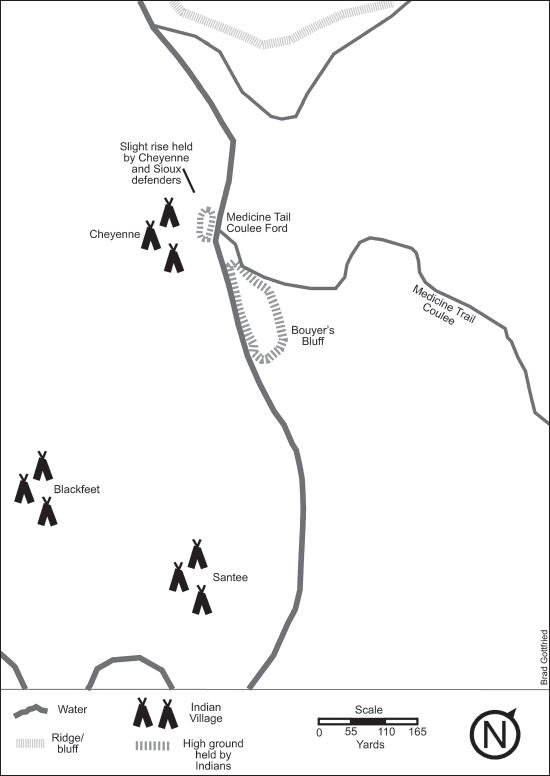
Map of the area of Custers final charge on Medicine Tail Coulee Ford. (Courtesy Bradley M. Gottfried, PhD)
Introduction
No survivors of nearly half of an entire United States Army cavalry regiment (five companies) were left to tell the tale about what happened on June 25, 1876. As a result, no battle in the annals of American history has been more misinterpreted by layers of romance and fiction than the bloody showdown at the Little Bighorn. To this day, the hidden truths of no single battle in Americas story have been more persistently elusive than Custers Last Stand. Therefore, the battle of the Little Bighorn in the remote Montana Territory has remained one of American historys most enduring mysteries and enigmas on multiple levels. The general assumption has been that nothing new can be said today about this iconic confrontation that represented the apex of a longtime culture clash and a defining moment in the American saga. However, nothing could be further from the truth.
To this day, this famous battle fought deep in the heart of buffalo country has been shrouded by sentimentality and romanticism, bestowing more myths than actual history. Few, if any, battles have been more distorted by so many contradictions and controversies as the fight at the Little Bighorn. Therefore, it is now time to more closely look at this iconic battle beyond the outdated traditional interpretations upon which the romantic myths have been based. More abundant Indian oral testimonies have now offered the inclusion of forgotten voices that reveal hidden truths about the battle at the Greasy Grass River, as the Sioux called it.
To additionally obscure what really happened on June 25, a good many uncomfortable truths regarding one of the greatest fiascos in American military history had to be covered up to protect the reputations of Americas top military leaders and the 7 th Cavalrys officer corps. Therefore, Lieutenant Colonel George Armstrong Custer immediately became the most convenient scapegoat for the unprecedented disaster to preserve the American militarys image and the reputations of his fellow officers and senior leaders, who were actually far more responsible for the fiasco than their regimental commander.
After dividing his 7 th Cavalry to increase tactical flexibility for striking the largest Indian village yet seen on the Northern Great Plains, the exact final movements of Custers five companies on the far north continue to be hotly debated to this day, because there were no survivors. Even the alleged final positions where the dead bodies of 7 th Cavalry troopers were found have laid a shaky foundation for the exact course of actual events, fostering additional misconceptions and erroneous conclusions.
As part of the enduring romance, the immortal visual portrayals of Custer defending the open hilltop (Custer Hill) and then falling heroically before masses of charging attackers have long been some of Americas most iconic images. The heroic imagery of Custers Last Stand became an early and enduring symbol of the vanguard of civilization pushing aside the barbarian horde of a different culture and color: Americas rustic Thermopylae on the Northern Great Plains. This romantic portrayal of the disaster has been created by more than a thousand paintings, illustrations, and drawings. Custers Last Stand has been marketed by an unprecedented outpouring of books, films (including D. W. Griffiths 1912 film, The Massacre ), and documentaries over generations, ensuring that such myths replaced mundane and uncomfortable realities. What had been manufactured for public consumption was the enduring image of a glorious demise (like the ancient Greek warriors so-called beautiful death in 480 BC at Thermopylae) and an apotheosis for one of the Norths greatest Civil War heroes. A brigadier general at only age twenty-three and the winner of a long list of Civil War victories, Custers horrific death on a once-obscure, lonely hilltop in Montana at the hands of savages seemed the most improbable of possible ends for a dynamic man of ability and destiny.
For young America on the verge of becoming a major world industrial and military power, Custers annihilation shook the heady confidence of a vigorous republic when celebrating its Centennial soon after. Custers defeat was truly a Greek Tragedy, but in a western frontier setting that mocked Americas amazing success story, Centennial celebration, and national pride. Meeting an inglorious end, Custers death at age thirty-six in leading more than 200 men to their doom has been one of the most controversial military actions in American military history. Hence, millions of Americans have been fascinated with this relatively brief and small clash of arms that has long captured the national imagination.
Next page

